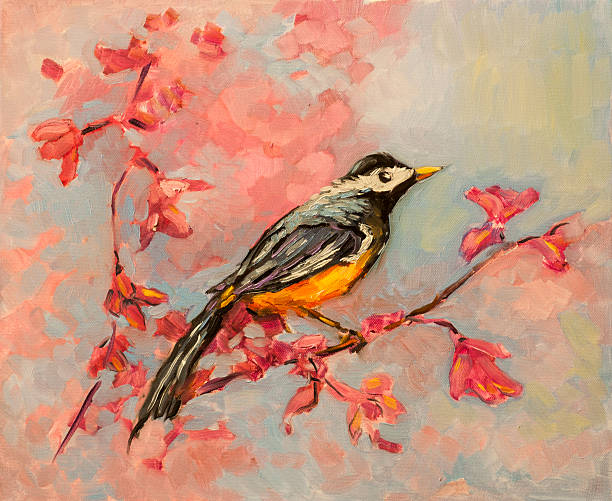Rare Valuable Oil Paintings for Sale
Discovering All About Oil Paints: An Overview to Understanding Their Charm and Value
Oil paints have actually mesmerized audiences for centuries, using a glimpse into the creative mastery of numerous periods. Their rich history is linked with cutting-edge strategies and profound emotional expression. Understanding the materials and methods behind these art work can boost recognition. Furthermore, the marketplace for oil paintings presents possibilities for collection agencies and financiers alike. As one explores this remarkable globe, the concern occurs: what makes an oil paint genuinely important?
The Background of Oil Paint: A Trip Via Time
Although oil painting has roots that date back to old times, it absolutely grew throughout the Renaissance, when musicians found its flexibility and rich shade potential. Early examples can be traced to the 7th century, with techniques developing significantly across societies. The tool ended up being noticeable in Northern Europe in the 15th century, particularly via the jobs of artists like Jan van Eyck, who spearheaded its usage for detailed realistic look and lively colors. This duration marked a departure from tempera paints, enabling for better deepness and texture. As oil painting spread, it influenced plenty of musicians, bring about masterpieces by prominent figures such as Leonardo da Vinci and Rembrandt. The tool's heritage proceeds, forming the art globe well right into modern times.
Comprehending Oil Repaints: Products and Techniques
As musicians explore the globe of oil paints, they encounter a varied array of materials and strategies that define this medium. The primary parts of oil paint include pigments, which supply shade, and drying out oils, such as linseed, that bind the pigments and assist in application. Various ingredients can change the paint's structure and drying out time, enhancing convenience. Methods like glazing, where clear layers are accumulated, and impasto, which entails using thick paint, permit different aesthetic impacts. Additionally, making use of brushes, palette knives, and even fingers can produce special structures and coatings. Comprehending these materials and strategies allows artists to totally reveal their imagination and attain the desired effect in their artwork.
The Duty of Color in Oil Paintings
Shade plays a pivotal duty in oil paints, influencing both aesthetic charm and emotional vibration. Understanding color concept essentials, including the partnerships between shades, can boost an artist's capacity to communicate state of mind and atmosphere. Additionally, grasping shade mixing methods enables better deepness and splendor in a painting's palette.

Color Theory Basics
Recognizing shade concept is crucial for musicians dealing with oil paints, as it forms the foundation for producing harmonious and aesthetically appealing structures. Shade theory incorporates the research study of exactly how colors engage, the shade wheel, and the connections between primary, second, and tertiary shades. Musicians make use of complementary shades to boost contrasts and produce centerpieces, while analogous colors promote unity and cohesiveness within an item. Furthermore, the ideas of cool and warm shades affect the assumption of depth and space in a paint. Realizing these principles allows artists to control shade effectively, leading the audience's eye and connecting their intended message. Proficiency of shade theory eventually enhances an artist's ability to convey emotions and concepts through their job.
Emotional Influence of Shade
The psychological effect of color in oil paints plays a crucial duty in just how customers regard and link with art work. Colors evoke certain sensations and state of minds, affecting the audience's emotional state. Cozy tones like reds and oranges can produce a feeling of heat and energy, while great tones such as blues and eco-friendlies commonly evoke peace or self-contemplation. Artists strategically pick color palettes to enhance narrative aspects, assisting the target market's psychological trip. The saturation and contrast of shades even more intensify these effects, attracting attention and creating focus. Ultimately, the interaction of shades in oil paints not just improves their visual charm but also acts as a powerful medium for psychological expression, enriching the viewer's experience and analysis.
Color Mixing Techniques
While many elements of oil painting add to the total make-up, understanding color blending strategies is essential for attaining desired effects and deepness. Color mixing can be come close to with various approaches, including the additive and subtractive procedures. Additive mixing involves combining colors of light, while subtractive mixing depends on pigments, where colors blend to develop brand-new shades. Artists often make use of a restricted combination to create harmonious jobs, understanding the relationships between primary, secondary, and tertiary shades. Methods such as glazing and scumbling better improve deepness and luminosity. By skillfully mixing shades, an artist can stimulate feelings, create centerpieces, and achieve a sense of realism, ultimately boosting the paint's psychological and visual impact.
Famous Oil Painters and Their Iconic Functions

Renowned for their proficiency of color and strategy, oil painters have actually developed some of one of the most popular art work in background. Distinguished musicians like Vincent van Gogh astounded target markets with his stirring brushwork in "Starry Night," while Claude Monet's "Impact, Daybreak" prepared for Impressionism. Leonardo da Vinci's "Mona Lisa" continues to be an enduring sign of imaginative genius, showcasing his skill in catching human expression. Rembrandt's "The Evening Watch" shows his ingenious use of light and shadow. Other significant figures include Pablo Picasso, who reinvented modern art with his vibrant trial and error in works like "Les Demoiselles d'Avignon," and Georgia O'Keeffe, whose vivid representations of blossoms and landscapes aided define American modernism. Each artist's unique design added substantially to the oil painting landscape.
How to Evaluate the Top Quality of an Oil Paint
Assessing the quality of an oil paint entails a cautious assessment of workmanship methods, as well as an evaluation of shade and composition. Observing brushwork, layering, and the application of paint can disclose the musician's ability degree. Furthermore, the interplay of shades and the general arrangement of components contribute considerably to the paint's aesthetic worth.
Analyzing Workmanship Methods
A meticulous assessment of craftsmanship strategies is important for figuring out the top quality of an oil painting. Evaluators must initially check out the application of paint; thick, textured brushstrokes might suggest a skilled hand, while overly consistent applications can indicate an absence of depth. oil paintings for sale. The layering technique is also vital; the presence of lusters and varied density can boost brightness and complexity. Additionally, the top quality of the materials made use of, such as more info the canvas and pigments, plays a substantial role in durability and overall aesthetic. Focus to detail in elements like sides and changes in between shades shows the artist's commitment to their craft. Ultimately, these methods contribute to the painting's psychological impact and market value, acting as signs of the musician's skill and intent
Examining Color and Structure
While evaluating the quality of an oil painting, one have to concentrate on the interplay of color and structure, as these components are basic to the art work's total effect. Color options can develop and stimulate feelings mood; consequently, the musician's palette should be taken a look at for consistency and comparison. A well-balanced composition directs the customer's eye and produces a feeling of unity. Musicians usually use techniques like the guideline of thirds or leading lines to enhance visual interest. Additionally, using light and shadow can include deepness, enhancing the three-dimensionality of the painting. Ultimately, a successful oil painting marries color and structure, engaging the audience and inviting a much deeper admiration of the artist's vision and strategy.
Taking care of and Preserving Oil Paintings
Appropriate care and preservation of oil paints is essential for keeping their honesty and durability. To secure these artworks, it is important to present them away from direct sunshine, which can create fading and discoloration. Maintaining a secure setting with controlled temperature and moisture additional aids in preventing damages. Cleaning need to be done delicately using a soft, dry cloth, avoiding any harsh chemicals that could damage the paint or varnish. Normal examinations for signs of degeneration, such as fracturing or flaking, are suggested. When transporting or saving oil paints, proper padding and framework are needed to prevent physical damage. Eventually, persistent care adds to the aesthetic appeal and value of oil paints gradually.
The Market for Oil Paints: Investing and accumulating
Recognizing the marketplace dynamics for oil paints is crucial for enthusiasts and financiers alike. The worth of these artworks is affected by different factors, consisting of the musician's reputation, historical relevance, and present trends. Enthusiasts typically seek items that resonate directly while thinking about potential admiration in value. Public auctions and galleries offer as primary locations for trading, with prices changing based on demand and rarity. Purchasing oil paintings calls for research into the market, as well as an understanding of credibility and provenance. Furthermore, arising artists may supply possibilities for significant returns, while developed names can command high costs. Generally, a tactical technique to gathering can produce both visual enjoyment and monetary benefits.

Frequently Asked Concerns
What Are the Ecological Impacts of Oil Painting Materials?
The ecological influences of oil paint materials include the release of volatile organic compounds (VOCs), unsafe waste generation, and resource extraction for pigments. These aspects add to air pollution and environmental degradation, elevating issues among ecologically conscious musicians and customers.
Just How Do Different Canvases Affect Oil Paint Outcomes?
Different canvases affect oil paint results substantially. Surface, texture, and absorbency quality can change paint application, drying times, and color vibrancy. Musicians typically select particular canvases to accomplish wanted effects and enhance their creative expression.
Can Oil Paintings Be Recovered if Damaged?
Oil paintings can undoubtedly be restored if damaged. Expert conservators use numerous techniques to repair splits, tidy surface areas, and address staining, guaranteeing that the artwork preserves its initial beauty and value for future generations.
What Are the Indications of an Initial Oil Painting?
The signs of an original oil painting include visible brush strokes, texture variations, and an unequal canvas weave (oil paintings for sale). Additionally, authenticity might be validated with provenance, signatures, and the existence of a varnish layer special to oil tools
Just How Has Modern Technology Influenced Modern Oil Paint Techniques?
Modern technology has actually substantially affected modern-day oil paint methods by introducing digital tools for preparation, boosted products for structure and durability, and on the internet platforms for sharing and offering art, thus broadening artists' creative opportunities and target market reach. Oil paint has origins that date back to ancient times, it really thrived during the Renaissance, when musicians uncovered its adaptability and rich shade possibility. The emotional effect of shade in oil paints plays a vital function in exactly how visitors link and view with artwork. While several elements of oil paint add to the overall composition, grasping shade mixing strategies is important for achieving wanted results and depth. Assessing the quality of an oil paint includes a mindful analysis of craftsmanship techniques, as well as an analysis of color and structure. While examining the high quality of an oil painting, one need to focus on the interplay of color and structure, as these aspects are essential to the art work's total influence.